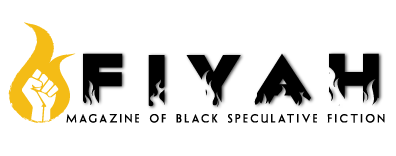We provided participants a list of 62 markets using the list in Fireside Fiction’s #BlackSpecFic report, and allowed respondents additional space to write in unlisted markets to which they submitted work between October 2015 and November 2016. This generated a list of 105 sampled markets.
Respondents submitted work to 82 of the cumulative 105 markets and sold 48 stories.

The Top 13
- 70 markets received between 1-9 unique story submissions.
- 8 markets received between 10-15 unique story submissions.
- 5 markets received between 20-40 unique story submissions.
The top 13 submitted markets (>10 submissions) in descending order were Lightspeed, Apex, Clarkesworld, Strange Horizons, Tor.com, Fantasy & Science Fiction Magazine, Daily SF, Asimov’s, Shimmer, Fireside, Abyss & Apex, and Analog Magazine. Of these markets, five bought the rights to >1 story. Four markets bought none of submitted works contributed in this survey.
All 13 of the top markets are designated PRO markets (those paying at least $.06/word)
Pay Rate
For the purposes of this survey, we categorized PRO markets as those paying >$.06/word per SFWA guidelines. SEMI-PRO markets were those paying between <$.06/word but at least $.01/word. All markets paying a flat rate <$50 or <$.01/word were categorized as TOKEN markets. Anomalies existed where markets were either shuttered, on hiatus, or could not otherwise have their pay rates confirmed through either their websites or information available on The Grinder submission tracker.
Respondents submitted overwhelmingly (268 subs) to PRO markets versus SEMI-PRO (62), TOKEN (19), and NO INFO AVAILABLE (20).
Of the 48 sales made within this sample period 39% were made to TOKEN markets followed by PRO markets (36%), and SEMI-PRO (25%).

Diversity Statements
We looked at the mission statements and submission guidelines pages for all markets with that information accessible on their websites in order to find a potential correlation between diversity/inclusive language and submission volume from Black writers.
The split was virtually even (48 with language / 49 without), but we found that those markets with inclusive language received nearly 100 more submissions than those without. We considered that perhaps it was simply because more PRO markets would include this language thus skewing the data, but even that split was near even (16 with / 14 without).

Market Visibility
23 of the original list received no submissions from our participating writers. Of the 39 markets found by the Fireside #BlackSpecFic report to have published no Black writers in 2015, 15 of these markets received no submissions from writers who responded to our survey.
Participants were provided a selection of methods including word of mouth, submission portals (The Grinder, Ralan, Duotrope), author blogs, conferences, and “Other/Social Media” and invited to select all the ways in which they find their markets. The majority of participants stated that they found their markets primarily through Word of Mouth (65%), The Grinder (58%), and social media (40%).
The Grinder: Diabolical Plots’s Submissions Grinder is a free and thorough tool for writers to track their submissions to hundreds of markets. A listing there is more likely to get hits than any other submission tracker tool (Duotrope is a similar tool, but subscription-based). We found all but 17 of the markets on our list had a presence on The Grinder. Only 7 of the markets not listed there received submissions (<2 each).
Social Media: Parameters for what qualified as “an active social media presence” included posting on sites such as Twitter and Facebook with a regular posting/engagement frequency of original content (not just RT’s or blog links) within the last 30 days. The majority of the Top 13 markets maintain an active social medial presence. A comparative sample of 13 markets who received no submissions from our participants were found to have lapsed or stagnant social media activity.
Word of mouth: This was difficult to gauge because word of mouth can be positive or negative for a number of reasons. If a market is known for its work in diversity or specifically soliciting Black writers, for instance, it will receive more submissions from Black writers who feel welcome in that space. By the same token, gossip and scandals in the SFF community communicated by word of mouth may impact submission volume negatively.
What we could measure, however, was how long markets have been around and how that might affect writers’ awareness of them. In cases like Asimov Magazine where social media presence has lapsed, having an established presence within the SFF community naturally facilitates awareness of the market. The Top 13 markets have a mean 21 years of existence between them (the two most recently established markets opened in 2014), while the comparative set of 13 markets receiving no submissions from our participants average 6 years old (youngest established 2015).

